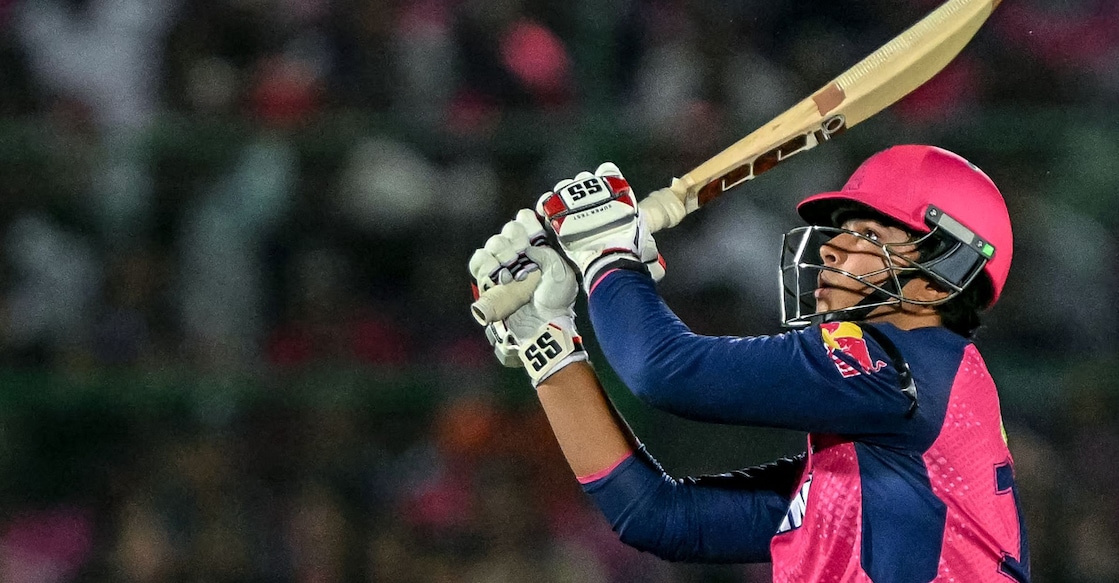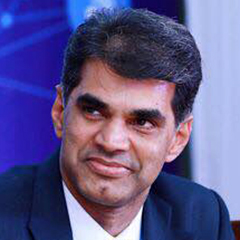Suryavanshi, keep your guard up. India has lost a few teenage prodigies

Mail This Article
It may not be an exaggeration to state that a good percentage of the viewers on television following the Indian Premier League (IPL) match between Mumbai Indians (MI) and Rajasthan Royals (RR) held at Jaipur on 1 May switched off their sets after the fourth ball of the first over in the innings of the latter.
It was not because the target set by MI, which was stiff even by IPL standards, had suddenly turned insurmountable. The reason was the dismissal of Vaibhav Suryavanshi, the new teenage sensation of Indian cricket, who sliced a delivery from Deepak Chahar into the hands of Will Jacks at deep mid-on to return to the dugout for a “duck”.
Suryavanshi had caught the attention of followers of the game when he was bought by RR during the IPL mega auction for a whopping amount of Rs 1.1 crore. He was only 13 at that time. He showed that RR made the correct decision with a sizzling debut against Lucknow Super Giants (LSG) where he hit the first ball he received for a sixer! If his knock of 34 off 20 balls on that occasion showed his potential, the scintillating century that he scored from a mere 35 balls against Gujarat Titans (GT) firmly established him as the rising star in the Indian cricketing firmament.

Hence, it was not surprising that the followers of the game were keen to find out how he would fare against the MI attack led by Jasprit Bumrah, Trent Boult and Chahar. But the law of averages caught up with him on this occasion and he got back without troubling the scorers.
Even as fans were overjoyed with his performance and critics were busy surpassing each other in singing paeans of praise over his talent, one could also hear some voices advising moderation. This makes sense too, as the youngster is still a work in progress and has miles to go before he can aspire to step into the shoes of Sachin Tendulkar or Virat Kohli.
Moreover, Indian cricket is replete with instances of talented youngsters losing their way after showcasing their talent at the highest level. Hence, one can understand the word of caution voiced by these observers.
A look at the history of cricket in India will show us that the list of cricketers who played for India while still in their teens is not very long. They comprise of Tendulkar, the youngest to make his debut for India at 16 years and 205 days, Laxman Sivaramakrishnan (17 years and 118 days), Parthiv Patel (17 years and 153 days), Maninder Singh (17 years and 222 days), Harbhajan Singh (17 years and 288 days) and Prithvi Shaw (18 years and 329 days).
The fact that, amongst the above five players, only Tendulkar and Harbhajan could survive in the rough and tumble world of international cricket shows how difficult it is to make the transition from first-class and domestic circuit to the highest level.
What happened to the others who, besides being prodigiously talented and had performed brilliantly in domestic cricket, that they fell by the way side in the international arena? Why could they not do full justice to their potential?
Siva remains arguably one of the most talented leg spinners that India has seen. He burst into the national reckoning while still in his early teens in the Duleep Trophy matches prior to the tour to Pakistan in 1982-83. He was a prodigious turner of the cricket ball and had a googly that could bamboozle the best of batsmen.
After an insipid debut against West Indies in 1983, he bounced back to the national side in late 1984 and ran through the touring English side in the first Test of the series, picking up 12 wickets. He followed this up with a brilliant round of performances during the World Championship of Cricket tournament hosted by Australia in 1985.
Unfortunately, this was the last time Siva spun his magic around batsmen. He lost all control over line and length with the result that he served a buffet of full tosses, half volleys and short-pitched balls, which were feasted upon by the willow wielders. He shot up in height during this phase and could not make the required adjustments to his bowling style to cope with this change.
His reluctance to put in long hours at the nets, combined with an attitude that antagonised well-wishers and seniors, spelt the death knell for his player. He lingered around for some more years till he hung up his cricketing boots. Siva resurfaced many years later as a commentator when his knowledgeable observations made one realise the extent of the loss Indian cricket suffered on account of him not doing justice to his potential.
Maninder also reached the national side around the same time as Siva but made his debut earlier, during the difficult tour to Pakistan in 1982. With his beautiful loop, beguiling flight and ability to run through sides on helpful surfaces, he was touted as the “rightful successor to Bishen Bedi”. He took his time to establish himself on the national side and became a regular from 1985 onwards.
But he suffered a mysterious loss of form after the 1987 World Cup and lost his place in the side. Though he made a comeback a couple of years later, he was not the same bowler. He tried a different round arm action as a result of which he lost both the flight and the “nip” that he used to generate off the pitch. A tally of 88 wickets from 35 Tests stands as testament to unfulfilled talent that had promised so much at one time.
His later brush with the law for alleged possession of cocaine and an accident which generated rumours of an attempted suicide tell the story of an unhappy mind, troubled by the inability to come to terms with the ups and downs that are an integral part of both cricket and life.
Prithvi Shaw hails from Mumbai, and his exploits as a schoolboy cricketer won him comparison with the legendary Tendulkar. He led the India Under-19 side to a title triumph in the International Cricket Council (ICC) World Cup and was immediately signed by Delhi Daredevils (DD) to play for them in the IPL for an amount of Rs 1.2 crore.

He started well in IPL, scoring 62 off 44 balls in his second outing and was soon inducted into the national squad. He had an explosive entry to the international arena, hitting a superb hundred on his debut. But his career sagged after that as his output with the bat came down considerably, especially when playing outside India.
Opposing bowlers soon found some chinks in his technique that he could not rectify. A history of repeated breaches of discipline and a tendency to ignore advice of well-meaning seniors ruined his reputation, and he is today languishing on the sidelines, barely making it to the Mumbai Ranji Trophy side.
Amongst this lot, only Parthiv Patel can claim to have lost his place in the side due to the arrival of better players. After making his debut as a chubby faced 17 years old, he struggled to establish himself in the national side as his glove work behind the stumps left much to be desired.
However, his ability with the willow helped him retain his place till Dinesh Karthik and later Mahendra Singh Dhoni appeared on the horizon, after which he stood no chance of making it to the playing eleven. But he toiled valiantly playing in the domestic first-class circuit and IPL with varying degrees of success and was rewarded with occasional recalls to the national side. He played his last first-class match in December 2020.

The fact that only two out of seven prodigies who played for the country in their teens could pursue a long career and leave their imprint on the game shows how difficult it is survive at the highest level.
Even more distressing is the fact that four of them failed for reasons related to temperament stands as testament for the importance of this aspect to achieve success at the highest level. Is it due to the fact that it is easier to reach the highest level but much more difficult to survive there? Or is it due to a fall in focus brought out by the celebrity status that comes along with success in the playing field?
There is no doubt about the fact that survival at the highest level is more difficult than reaching there. Even the smallest flaw in the technique and temperament of a player is identified by the opponents with the support of modern technology and they are ruthlessly exploited.
So staying at the top is a process of constant learning and improvement with hardly any room for letting down one’s guard. The fame and adulation that a youngster receives after the first round of success are sufficient to turn one’s head and lead him astray. Thus, any laxity in grit or softening of focus can prove to be suicidal for a young player and play havoc with his career.
It is for these reasons that prudent observers are advising caution and circumspection while assessing the performance of Suryavanshi in IPL. Further, he should not be under the illusion that cricket is played with the white ball alone, where run scoring is relatively easier.
To do full justice to his talent, he must sharpen his skillsets sufficiently to meet the demands of facing the red ball in the longer duration version of the game.
Above all, Suryavanshi needs the unstinted support of his family to develop the mental toughness, fortitude and resilience to meet the demands of playing non-stop competitive cricket as well as to take the rough times in his stride.
The role played by their respective families in charting their successful career is a common thread that runs through the biographies of outstanding cricketers like Sunil Gavaskar, Sachin Tendulkar, Rahul Dravid, VVS Laxman and Ravichandran Ashwin. Conversely, it can also be postulated that it was the lack of a strong support system that stood in the way of many a talented youngster from realising his full potential.

Hence, while Suryavanshi may look up to icons, idols, heroes and mentors on the cricket field, he will do well to realise the importance of maintaining close bonds with members of his family and stay rooted to the ground, without developing airs and attitude.
It is not often that one gets to see a talent as raw, young and exciting as Vaibhav Suryavanshi. One hopes and prays that he realises his full potential and scales tall peaks in his journey as a cricketer.


